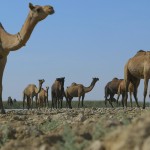IndiaWilds Newsletter Vol. 2 Issue XI
This issue of the IndiaWilds Newsletter brings into focus our approach towards poisoning our wilderness areas, fresh water sources with pesticides, allowing use of pesticides that have been banned in other countries, role of planning or the lack of it in fuelling the so called Development vs Conservation battle. The newsletter is available online at http://www.indiawilds.com/diary/indiawilds-newsletter-vol-2-issue-xi and you can also post your views directly in the article.
Is India a dumping ground?
This question arises time and again when we find inferior products sold in India despite those being banned in most of the developed countries. It has again come to the fore with the recent controversy about pesticides. We look at two chemicals
Endosulfan:
India is the largest user of Endosulfan, a highly toxic organochlorine compound that is used as an insecticide and acaricide. The impact of this deadly pesticide in India came to light in Kasaragod where it was sprayed in the plantations for nearly three decades. Since our plantations have come up in the place of pristine wilderness areas which are often the source of many a rivers and streams, spraying of pesticides leads to pollution of the water sources apart from accumulation in the soil. Studies have indicated that exposure to Endosulfan causes genetic mutation and has played havoc with the health of people and animals. Since its half life is estimated from 9 months to 6 years, it remains in the soil for a long time and continues to impact the lives of all living beings.
It has been banned in most of the developed countries including the US. Unfortunately, despite the repeated demands by the Govt. of Kerala, the Govt. of India doesn’t agree to ban this highly toxic chemical. For further details you can check here http://www.indiawilds.com/forums/showthread.php?t=5224
Furadan:
Several years ago, I came to know about this insecticide when I saw poachers use this in Chilika lake to kill birds. This pesticide is placed on the leaf of the water lilly, lotus etc and the birds die after eating those. Out of the hundreds of birds that die, the poachers are able to retrieve the bodies of a few and then sell those to the nearby eateries (dhabas) dotting the National Highway. Interestingly, this pesticide was sold in Africa by FMC. When it was reported that there were cases of lion poisoning, the organization decided to take back all the stocks that were present in the channel. Some details about it can be found here: http://indiawilds.com/forums/showthread.php?p=14187 and here: http://www.furadanfacts.com/InTheNews.aspx?itemId=1002
Interestingly, Furadan is marketed in India by Rallis India, a Tata group enterprise. I guess no one in India has pointed out to the Tata group that a product that has been withdrawn from Africa is still being marketed in India by one of its companies and there has been no effort to withdraw it from India.
Looking at these two examples, there are several questions that come to mind. When a product is withdrawn from Africa, why it is available in India? Why the Govt. of India is loathe taking action and keeps on insisting for further studies before banning toxic pesticides? Is life in India cheap?
The other issue that is not visible on the surface – and which nevertheless needs a mention – is why conservationists haven’t raised their collective voice against the indiscriminate use of pesticides, especially in ecologically sensitive places? Are we only concerned only about the visible impact like death of our megafauna like tiger, elephants etc due to poaching or deaths due to rail and road accidents?
Development vs Conservation: The Role of Planning
We have been talking about development getting hampered due to focus on conservation or wilderness areas to be sacrificed to maintain a decent quality of life. Is this true? Today, we would examine the role of planning.
Take the case of the Navi Mumbai airport. It has been continually in the news, as setting up the airport will lead to sacrificing a 90 meter high hill and 98 hectares of mangroves. For further details please check here http://www.indiawilds.com/forums/showthread.php?t=3882
Finally, the environment minister and the civil aviation minister came to an agreement on sacrificing mangroves to set up the airport, as it was felt that looking for an alternative plot for the airport will result in a delay of atleast 2-3 years more. The question that comes to mind is who is to be blamed for this? The editorial of a major English daily says that if this compromise was to be done, then it could have been arrived at earlier.
The key lies in the word compromise. Compromise by its definition means it is not the ideal solution. Why do we need to be saddled with a solution that is not ideal? Can we continue to hide behind the flawed logic that money has already been spent on the project and there would be time over run if we continue with the environmentally disastrous projects? A similar situation had come up when the Commonwealth Games village was constructed in the flood plains of the Yamuna. Despite several representations, it was decided that already money has been sunk in and the time was short, and hence the project was given the go ahead. It was another matter that the games village was flooded. The question is who is accountable? Is there any one answerable for their follies? Why do we suffer, just because a few bureaucrats and politician have messed up?
What is the role of our planners? Our urban planning is a mess. Large infrastructure projects like airports have a long gestation time and hence need to be planned well in advance taking into consideration the growth of the population in the city and the growth in cargo. Also, since a airport requires large area, the Government has to earmark the areas for future use, so that they don’t resort to these last minute decisions. Conservation has been branded as anti-development due to the lack of foresight and planning. I hope, in the near future we can rectify that.
Jumbo Smuggling Racket in Assam
A shocking news came to light, when a racket for elephant smuggling was unearthed in Assam. It is surprising that though elephants cannot be moved without the permission of the Chief Wildlife Warden, his signature was forged and police and forest department officials didn’t get a hint of it. It would be good if members may write to the Hon’ble Chief Minister of Assam demanding a CBI enquiry. For further details, you please check here:
http://www.indiawilds.com/forums/showthread.php?t=5232
Brutal Killing of Baby elephant in Assam:
As if the Jumbo smuggling racket in Assam was not enough, an elephant calf estranged from its mother was brutally killed by the people. The forest department officials appear to be mute spectators. The video tells a gory tale. Several important questions come to mind. If the common man living in the buffer areas react in such a brutal manner towards our endangered species, how relevant is the forest rights act? For further details please check here: http://www.indiawilds.com/forums/showthread.php?t=5171
Lafarge Plant in Meghalaya:
The battle for so called development vs conservation continues in the North East. The protest against the Lafarge plant in Meghalaya is escalated to the Hon’ble Minister for MoEF. Similar complaints from other states in the North East are sent to Shri Jairam Ramesh as people appear to have more faith in him rather than the State Governments. For further details check here: http://www.indiawilds.com/forums/showthread.php?t=5322
Valley of Flowers under threat:
The valley of flowers which was revered for its association with sages, loved for its beauty and bio-diversity, is under threat due to a proposed thermal power project in the Bhuidar Valley. For further details please check here: http://www.indiawilds.com/forums/showthread.php?t=5165
Wildlife Photography:
Images shared by our members between 10th Oct – 9th Nov, 2010 that depict interesting animal behaviour or are just plain beautiful..
Master of Disguise by Vikram Gupchup
http://www.indiawilds.com/forums/showthread.php?t=5041
Kandil pushpa by Jitendra Katre
http://www.indiawilds.com/forums/showthread.php?t=5058
Otters harassing mugger by Bibhav Behera
http://www.indiawilds.com/forums/showthread.php?t=5058
Tender Moment by Mrudul Godbole
http://www.indiawilds.com/forums/showthread.php?t=5143
An experience to remember by Pralay Lahiri
http://www.indiawilds.com/forums/showthread.php?t=5253
Bos Gaurus at Nilgiris by Mohan Raj
http://www.indiawilds.com/forums/showthread.php?t=5162
Barasingha male by Atul Dhamankar
http://www.indiawilds.com/forums/showthread.php?t=5208
River Lapwing by Atul Dhamankar
http://www.indiawilds.com/forums/showthread.php?t=5254
Pied Kingfisher by Ragoo Rao (using a compact camera)
http://www.indiawilds.com/forums/showthread.php?t=5135
Large Egret by Sandesh Astgikar:
http://www.indiawilds.com/forums/showthread.php?t=5228
Stork billed Kingfisher by Praveen Siddannavar
http://www.indiawilds.com/forums/showthread.php?t=5107
Future of the shoals? By Bibhav Behera
http://www.indiawilds.com/forums/showthread.php?t=5095
Life in Shapes by Rahul Parekh
http://www.indiawilds.com/forums/showthread.php?t=5260
I look forward to your inputs and your support in preserving the last tracts of wilderness and wildlife left in this beautiful country. For other interesting articles and photographs please check: http://www.indiawilds.com/forums/
The link to this Newsletter is available at: http://www.indiawilds.com/diary/indiawilds-newsletter-vol-2-issue-xi
All the newsletters can be found online at: http://www.indiawilds.com/diary/category/newsletter
In case, anyone of you has forgotten his/her user id and password can email the admin at the following email id administrator@indiawilds.com
Regards,
Sabyasachi Patra
www.indiawilds.com
Profile: http://www.indiawilds.com/profile.htm
Contact: http://www.indiawilds.com/contact%20us.htm
Facebook: http://www.facebook.com/pages/IndiaWilds/132629240481
- GoPro Hero 12 Black - 6 September,2023
- Leopards: The Last Stand - 2 July,2023
- Drifting in the Waters of Sundarbans - 26 March,2023










Leave a Reply